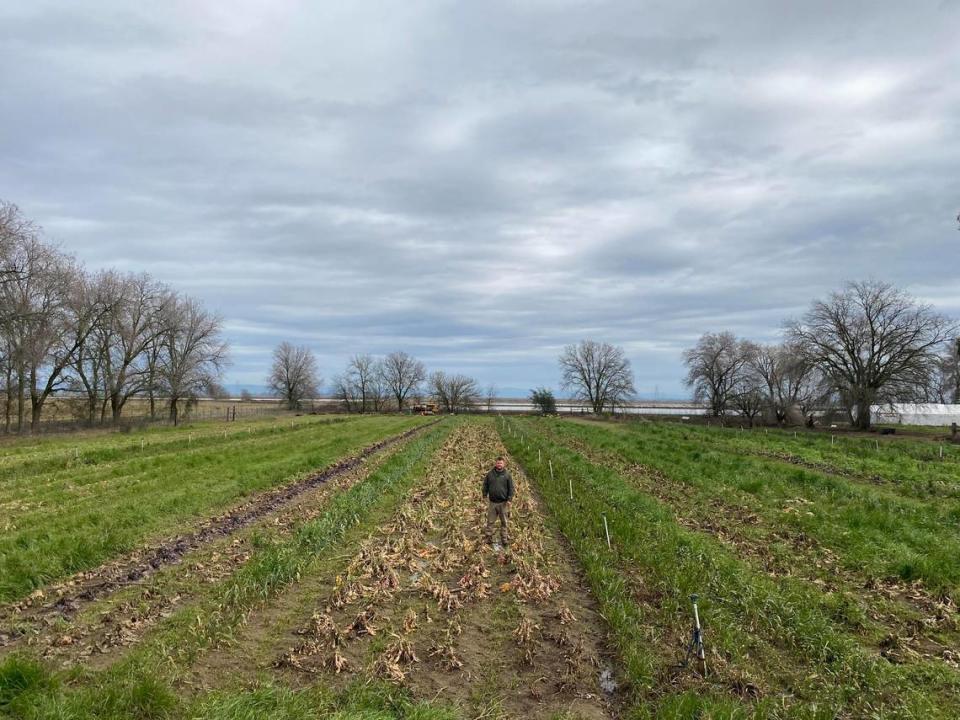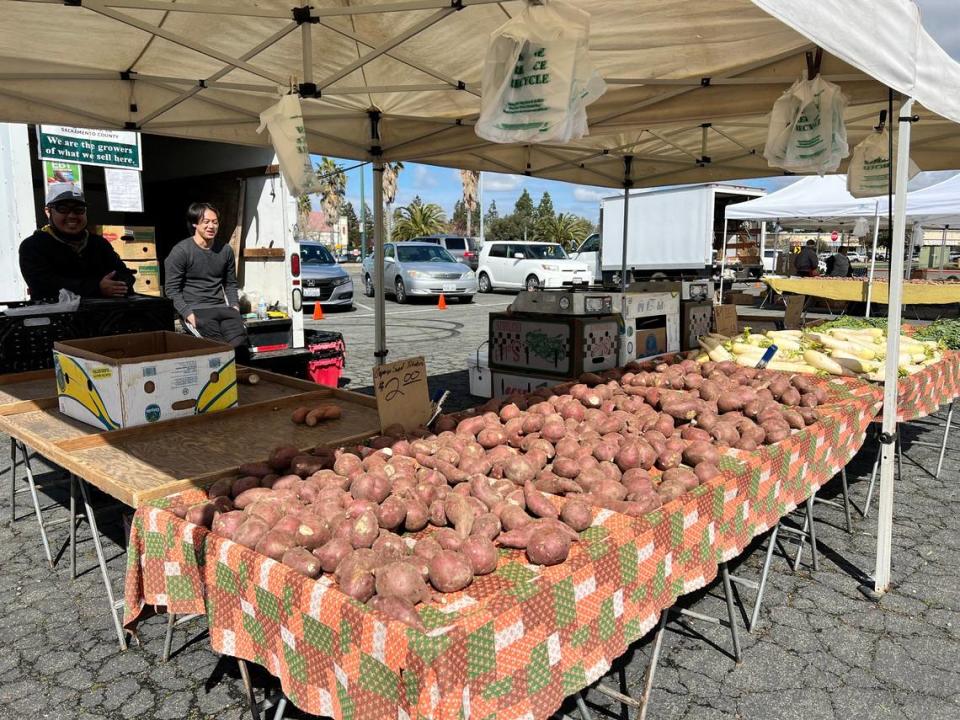Northern California farmers saw crops drown in rain. Will it hurt local market prices?
Back-to-back storms at the start of the new year put one Sacramento-area farm 3 feet underwater, drowning crops and squelching income.
“We lost everything,” said Rosie Kaperonis of Azolla Farm, who has been farming in Pleasant Grove for six years with her business partner Scrivner Hoppe-Glosser.
“You could literally kayak on the farm,” she said.
It was forced to close for the rest of the winter season.

A heavy string of storms has pounded Northern California since the start of January. Sacramento has received nearly 15 inches of rain from January to March, the National Weather Service reports.
And the rising snowpack in the Central Sierra is cause for flooding concern as temperatures warm this spring.
The constant rain has been affecting farmers across the state, including strawberry fields in Watsonville and Salinas after a levee ruptured.
Occasional floods are normal and will typically last up to 24 hours, Kaperonis said. But with the snow melt in the foothills and lack of sun, her farm was flooded for 20 days straight.
“We lost all our crops,” Kaperonis said, “which means we lost all of our current income and also the cost and the time invested.”
Fields at Azolla Farm, at the time, were filled with a variety of broccoli, cabbages, cauliflower, onions, herbs, radishes, carrots, collard greens.
Some of the vegetables were planted in August and they were slowly beginning to harvest most of the fields.

Kaperonis estimated that the farm lost up to $40,000 in projected sales. However, with production expenses, such as diesel, seeds and fertilizer — which have recently increased due to inflation, she added — the loss goes up to $70,000.
Since the 20-day flood, Azolla Farm was flooded twice due to rains and snow melt combined. The last time they sold produce at the markets was December.
“We work with the elements so much and we’re able to adapt very quickly,” Kaperonis said, “but in terms of this, it’s a standstill. There’s no scooping the water away or something.”
While some growers didn’t face the same amount of flooding, they are still reeling from damages.
On March 23, a handful of local farmers ran their booths at the Certified Farmers Market on Florid Road — just after another storm had rolled through the region.
Tou Cor Khang of T.C. Khang Farm said he couldn’t go out to harvest his products, due to the rain, because it’s too wet and muddy. With too many of his greens dying, he’s had to miss a few days at the farmers’ market.

The good part of the rain is you don’t have to irrigate, said Susan Kelso of Kelso’s Black Gold Ranch, a citrus farm in Oroville.
But the wind and rain have damaged her fruits and it’s been difficult to get into the farm to pick with the soil still wet, she said.
Slow start to the new season
Rain-drenched soil has delayed the next season of crops.
“The hard part for us is we can’t get ready for the summer right now,” Khang said at the Thursday farmers market. “... Usually by this time, every other year we’ll be out there getting fields ready, plowing and all that stuff.”
Typically, during the winter season in California, you can find products such as broccoli, citrus, squash and kiwis, according to California Grown, a state blog site. As we transition into the warmer months, you should anticipate goods such as asparagus, avocado and blueberries.
“Usually by now we are planting tomatoes,” Khang said. “This year, don’t count on it.”
While he expects to yield a lower amount of crops, he said the harvest will be very late.
Azolla Farm is also pushing back its next season.
Kaperonis said she was hoping to plant seeds this week but they’ve been set back because they’re unsure when the ground is going to dry.
“We’re kind of trying to play it safe, but that’s a risk,” she said, “because in this area, it’s a very quick spring usually and it goes quickly into summer.”
She said they’ll get into the ground with quicker-growing crops, such as arugula, radish, turnips and smaller greens.
Farmers’ markets struggle
The region’s recent rain and blowing winds are also halting operations at farmers’ markets, a key outlet for farmers to sell their goods.
“This has been a brutal winter,” said Dan Best, coordinator of Certified Farmers’ Market, an outdoor market for California farms in Sacramento County.
There have been fewer farmers at the markets, he said, and they’ve had to cancel the market some days due to the weather. With winds causing rain to drop horizontally, it can get dangerous and difficult to protect customers with just a tent.
Will produce prices rise?
Grocery store costs, in general, have been on the rise across the country.
According to the U.S. Department of Agriculture, the consumer price index for grocery store and supermarket purchases went up 0.3% from January 2023 to February 2023.
Prices for all categories of food, such as meat, have increased, except for fresh vegetables and eggs, the department reported.
And despite the overhaul of crops on farms, you’ll likely find steady prices at the farmers’ markets.
Best said he thinks growers aren’t thinking about grocery store prices.
“They’re just looking at their own particular situation,” he said. “They’re creatures of habit. There’s some really good bargains from them, because they just need the money.”
Raising prices can be a big gamble, Kaperonis said. People are used to seeing some farmers at the market or restaurant, and so an increase of 25 or 50 cents can make some feel like they’re getting shorted.
“We’ve been kind of taking a hit already over last year,” she said, “not being able to increase our prices as much for fear of losing clientele and being able to sell it.”
What to expect in spring
With spring quickly approaching, drenched farmland will finally dry. Weather experts are predicting rain should be mostly mostly over for the year.
Forecasts of precipitation have been teetering for the start of April, but as of Friday, rain is not expected in next week.
What do you want to know about life in Sacramento? Ask our service journalism team your top-of-mind questions in the module below or email servicejournalists@sacbee.com.

